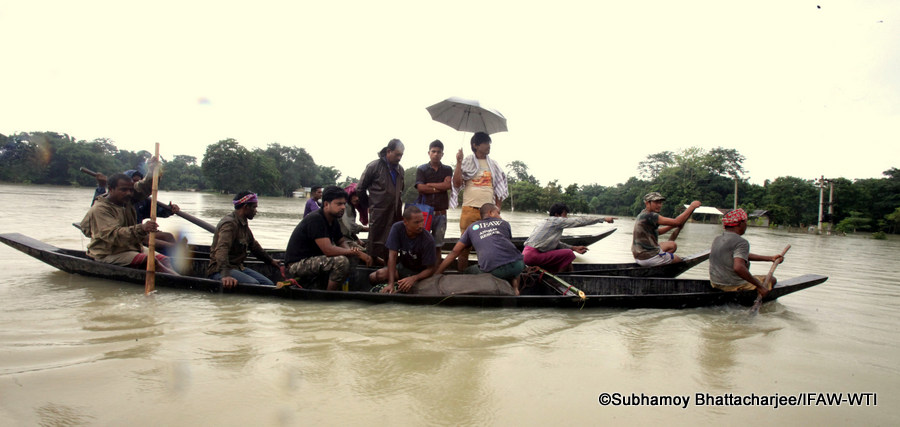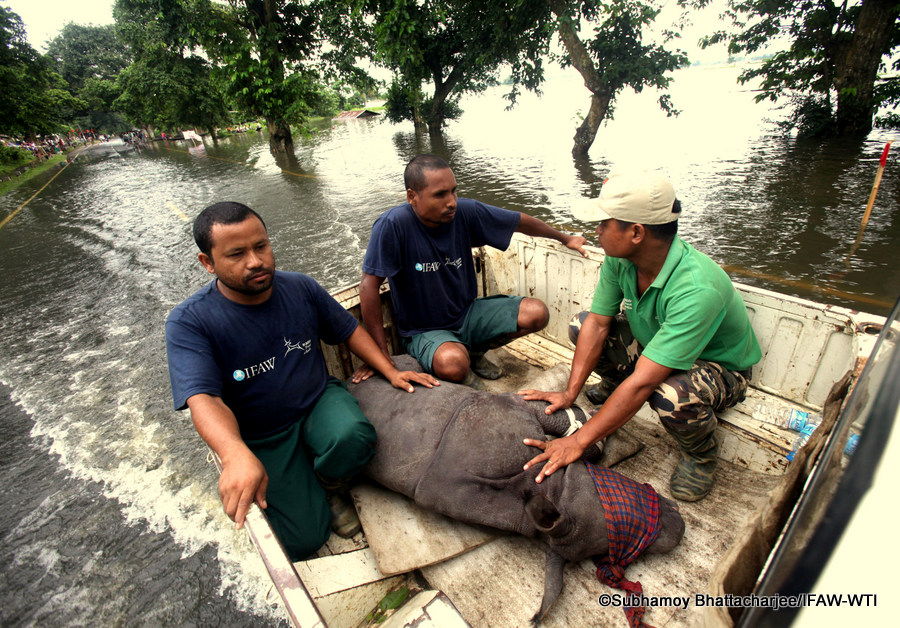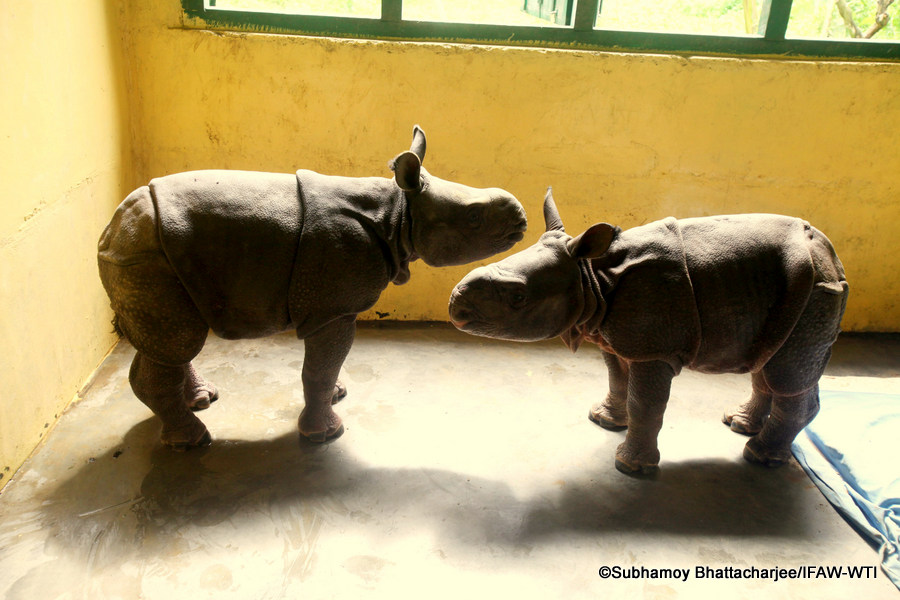14
Sep
Kaziranga Flood Update: CWRC Inundated with Rescued Rhino Calves
0 Comment
CWRC, Kaziranga National Park, July 28, 2016: Six rhino calves rescued from the monsoon floods in Kaziranga National Park over the last three days have been admitted to the Large Animal Nursery at the Centre for Wildlife Rehabilitation and Conservation (CWRC; run by IFAW-WTI with support from the Assam Forest Department) for stabilisation and treatment. The influx has forced staff to shift the nursery’s five previous occupants, all elephant calves, to an adjoining outdoor stockade where a makeshift shelter is being constructed for them.
An MVS team uses country boats to get a rescued rhino back to safety through the raging flood waters
As reported earlier, Kaziranga is facing a major wildlife crisis this year as large portions of its area have been completely inundated in what are being described as the worst floods in a decade. Four Mobile Veterinary Service (MVS) units – three from CWRC and one from the WTI-JTEF Wildlife Rescue Centre at Diphu – have been deployed to run round-the-clock rescue and wildlife crisis mitigation operations in the worst affected ranges of the park.
Following this update on the rescue of a three-month-old male rhino calf on July 26, a yearling female rhino was rescued the same day by locals in the Sildubi area of Kaziranga’s Bagori Forest Range, and brought to CWRC by an MVS team with the assistance of frontline forest staff.
July 27 was an especially hectic day for the MVS teams as four rhino calves were successfully rescued from the floods and admitted to CWRC for further care. These included two female calves found in separate rescue incidents, again in the upland areas of Sildubi in the Bagori Range. Another female rhino calf, nearly six months old, was rescued by a joint WTI-JTEF-IFAW MVS team led by veterinarian Dr Daoharu Baro from National Highway 37 late in the evening. “We were monitoring the animal since early morning when it reached near the highway. There was no scope to rescue it, however, due to the high water level. Finally, in the evening, we were able to give it the space it needed to come out to a safer place near the highway”, Dr Baro said. Crowd management was a major challenge on NH37 during the rescue and the DFO of Kaziranga had to step in to personally lead the operation, with the support of Assam Police, CRPF and VDP personnel.
The most dramatic rescue of the day took place in the afternoon at Diphalu Pathar Dergayan Gaon, a flood-affected village. Earlier that morning a villager had spotted a male rhino calf, approximately six months old, trying desperately to find higher ground in the flood waters. He informed Pramod Gogoi, Chief General Secretary of the Kaziranga Natural Environment Education & Cultural Association (KNEECA) and other villagers, and together they chalked out a plan to save the rhino. “All households here have their own boats since the area is flood prone”, Mr Gogoi said. “We somehow managed to drag the calf and tie it to a tree in front of a house. It only had a small space to stand but it was safe from the flood waters for the time being. We also informed the Kaziranga DFO’s office and through them, the CWRC rescue team.”
An IFAW-WTI MVS team – veterinarian Dr Samshul Ali accompanied by animal keepers Lakhiram Das and Ramen Das – reached the spot having navigated through inundated villages on two country boats. The boats were lashed together and the calf placed on one, with people acting as a counterweight on the other boat. The journey back was precarious to say the least, but the animal was successfully transported through the flood waters back to the MVS vehicle.
“This was a first-of-its-kind rhino calf rescue in the present flood phase”, said Dr Ali, who sustained a minor injury in the rescue operation. “We had to be very cautious with our handling of the animal, particularly during the boat journey.” The courage and empathy of the flood-affected villagers deserves special mention here. The entire village came together, setting aside their own predicament, to save a baby animal.
All rescued calves are being closely monitored at CWRC’s Large Animal Nursery. Understandably, they are highly stressed at present and have not been responding well to formula milk, which is unfamiliar to them. The veterinarians at CWRC have been providing the requisite medications however, and are hopeful that the animals will begin to feed as they become acclimated to their new surroundings.












